Top Deepfake Detection Tools to Find Real vs Fake Videos
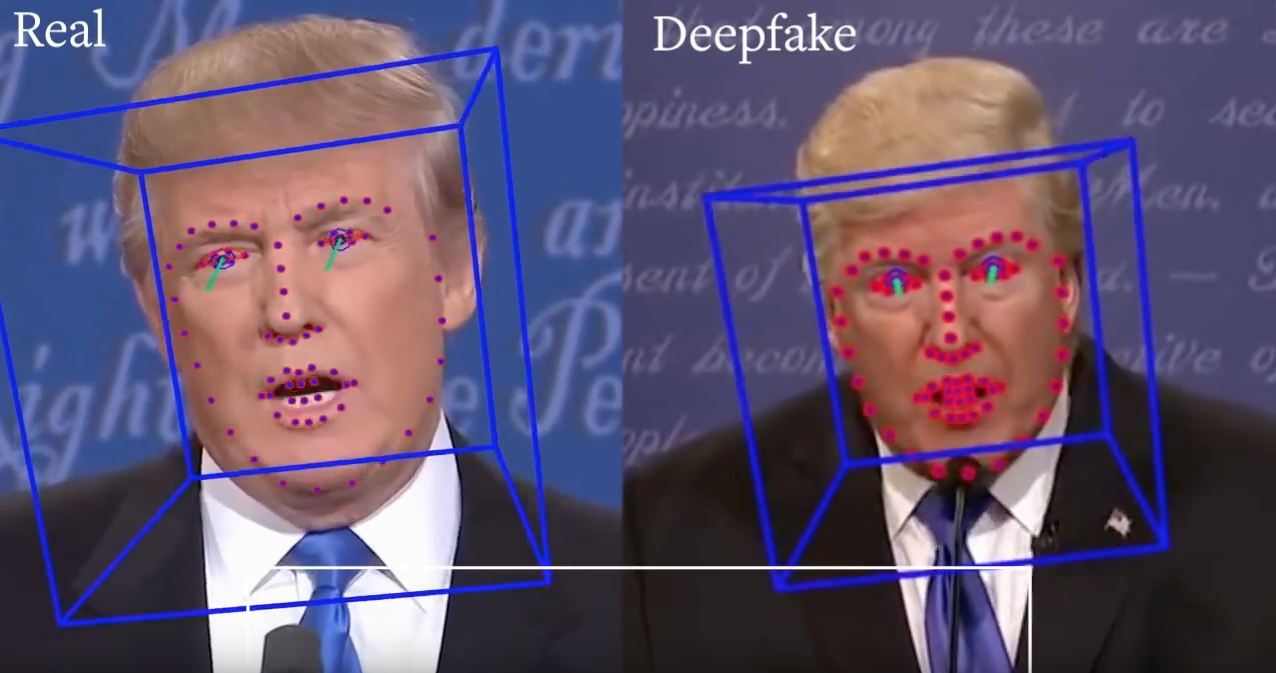
Deepfake technology, a blend of "deep learning" and "fake", marks a significant advancement in artificial intelligence and computer-generated imagery. Deepfakes are hyper-realistic digital media where a person's likeness, including their face and voice, is superimposed onto another individual in videos or audio recordings. This is achieved through sophisticated machine learning and neural network algorithms. We are going to discuss deepfake detection tools and the progress of many technologies.
The Challenges of Deepfakes:
Deepfakes pose serious challenges and potential threats across various domains. Misuse of this technology can lead to significant consequences, including:
- Misinformation and Fake News: Deepfakes can create convincing but false narratives, contributing to misinformation and fake news, particularly in sensitive areas like politics and journalism.
- Security Concerns: They can be used for fraudulent activities, impersonating individuals in financial transactions or creating fake evidence.
- Personal Reputation Damage: Deepfakes can cause irreparable harm to individuals' reputations by showing them in fabricated situations.
The Imperative for Deepfake Detection:
Given these challenges, developing and deploying practical deepfake detection tools is crucial. These tools aim to:
- Protect Information Integrity: Ensuring the authenticity of digital content is vital in maintaining trust in digital media.
- Prevent Misuse: Detecting deepfakes helps prevent their misuse in criminal activities, misinformation campaigns, and personal harassment.
- Promote Digital Security: As deepfakes become more sophisticated, advanced detection tools are necessary to uphold digital security standards.
"In the deepfake world, believing your eyes is like trusting a politician's promises - a recipe for disappointment."
Popular Deepfake Detection Tools to Find Real vs Fake Videos
As we delve into the list of some prominent deepfake detection tools and their accuracies, it's important to remember their vital role in safeguarding digital integrity and countering the potential abuses of deepfake technology. It's important to note that the accuracy of these tools can vary depending on the type of deepfakes they are detecting and the conditions under which they are tested. Below are list of AI video verification tools to detect deepfake.
1. Microsoft's Video Authenticator:
- Accuracy: In tests, it has shown high accuracy rates, but specific percentages can vary based on the dataset and deepfake method used.
- Description: This video-focused tool analyzes a video to provide a score indicating the likelihood of the media being artificially manipulated. It detects blending boundaries and subtle artifacts unseen by the human eye.
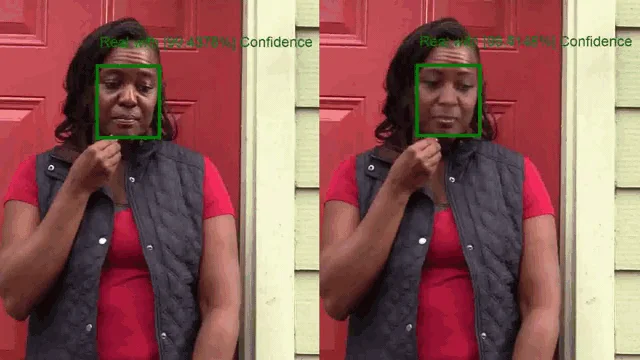
2. Deepware Scanner:
- Accuracy: Reports suggest good accuracy, but specific figures are not publicly disclosed.
- Description: This smartphone app analyzes videos to determine if they are synthetic, focusing on facial recognition and movement patterns to identify deepfakes.
3. FaceForensics++:
- Accuracy: In a benchmark test, it achieved an accuracy rate of over 90%.
- Description: Developed by researchers, FaceForensics++ uses a large dataset of tampered facial images to train machine learning models for deepfake detection.
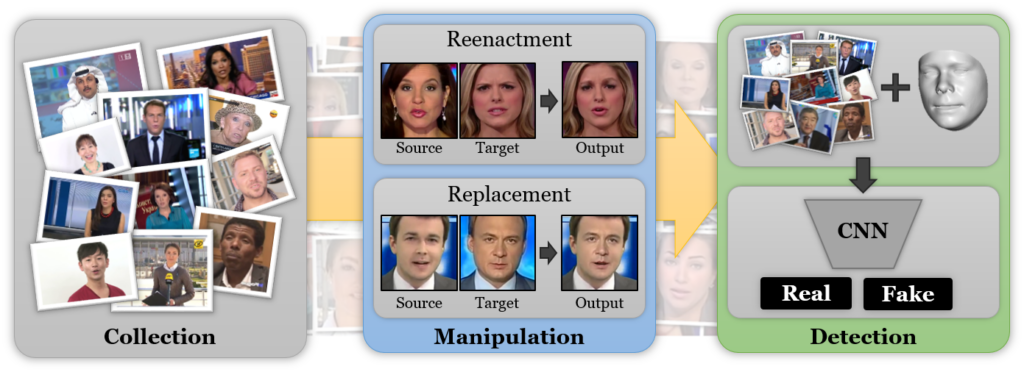
4. Deepfake Detection Challenge (DFDC) Dataset Tools:
- Accuracy: Various tools developed using this dataset have shown varying levels of accuracy, with some achieving over 80%.
- Description: Meta, in collaboration with academic institutions, created the DFDC dataset to provide a standard benchmark for deepfake detection tools. Researchers and developers use this dataset to train and test their models.
5. Google's Jigsaw Deepfake Detection:
- Accuracy: Specific accuracy rates are not publicly detailed.
- Description: Jigsaw, an incubator within Google, developed a model that focuses on audio and video content components to identify deepfakes. It leverages a large dataset of deepfake examples for training.
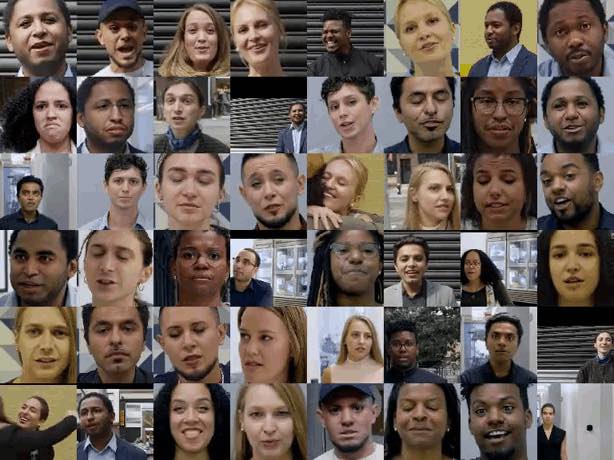
6. Sensity (formerly Deeptrace) Visual Threat Intelligence Platform:
- Accuracy: Offers high accuracy, though exact figures depend on the use case and deepfake technology.
- Description: Sensity provides real-time monitoring and detection of deepfake videos, focusing on social media and other online platforms.
https://youtu.be/KttuYY91smk
7. Zao App Detection Tool:
This is Chinese app developed to create deepfake videos but after controversial issues app developer build 'DeepFake' detector to address privacy and misuse.
- Accuracy: High accuracy in detecting deepfake generated by the Zao app itself.
- Description: After the viral spread of Zao-created deepfakes, specific tools were developed to detect these types of deepfakes, focusing on the unique artifacts left by the app's generation process.
8. Metaphysics:
This is another deepfake video-creating application that is also building a deepfake detection tool so that people will use it to identify deepfake videos.
- Accuracy: Detecting only videos generated from their platform is highly accurate.
9. FakeCatcher:
Developed by Intel, FakeCatcher takes aim at the growing threat of deepfakes, videos manipulated by AI. This real-time tool acts as a digital detective, analyzing faces, body movements, and even blinking patterns to spot inconsistencies that catch alteration using AI. While still under development, FakeCatcher holds immense potential. Using FakeCatcher news organizations can verify video legitimacy before broadcasting, social media platforms can recheck viral misinformation, and individuals can gain more trust in online content. However, it's not a permanent solution. Deepfakes are constantly evolving, requiring continuous improvement and responsible use of this powerful tool. It's going to be a cat-and-mouse game soon.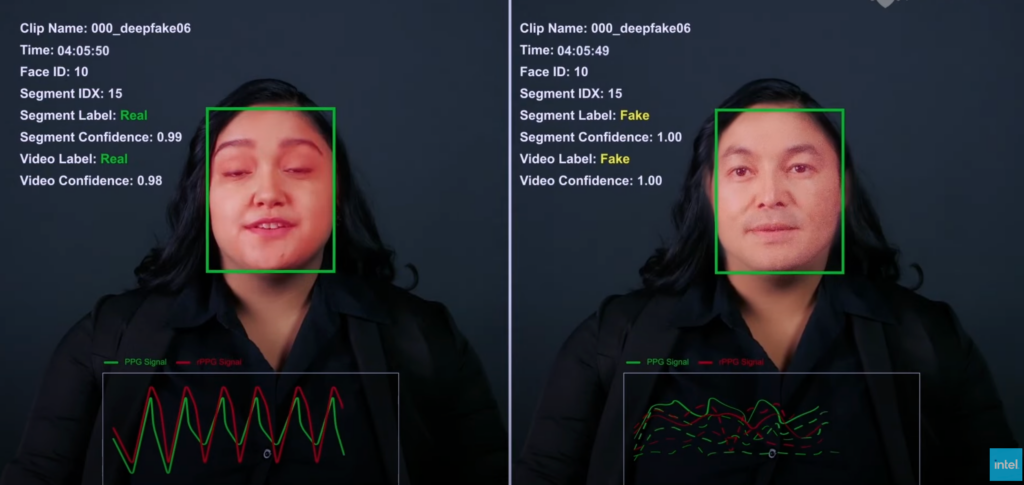
FakeCatcher have impressive real-time deepfake detection with claims of 96% accuracy. This means it correctly identifies 96 out of 100 fake videos, potentially acting as a powerful shield against misinformation. However, accuracy isn't a static number due to many important factors.
Several key factors impact FakeCatcher's performance:
1. Deepfake sophistication: As creators develop more advanced techniques, the tool needs constant updates to stay ahead.
2. Video quality: Lower resolution or heavily compressed videos can challenge their precision.
3. Subtleness of manipulation: Some deepfakes focused on audio or minor facial changes might slip through its detection process.
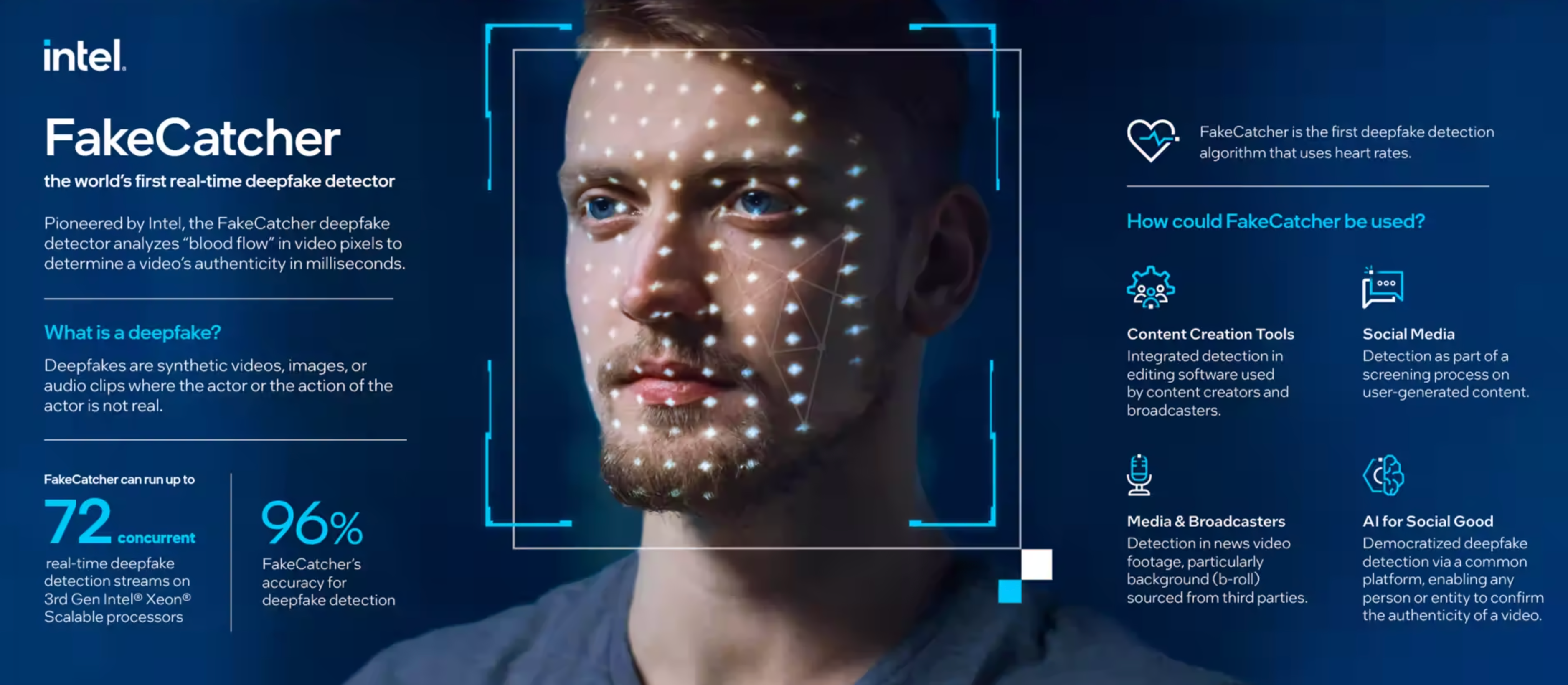
Conclusion:
It's important to remember that accuracy figures for deepfake AI video verification tools vary widely based on testing methodologies. Moreover, as deepfake technology evolves, these tools need constant updates and reevaluation to maintain their effectiveness.
You must stay informed about deepfakes and support the development of better detection tools to combat their potential harms.

